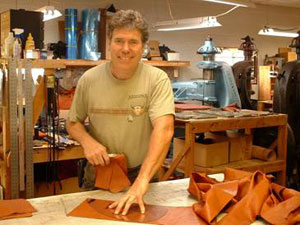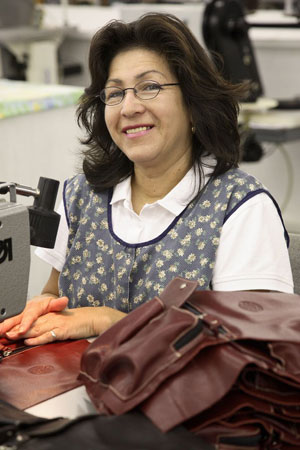Assembler (Leather Goods)
Tasks & duties

Leather goods assemblers may do some or all of the following:
-
cut out the parts for the products
-
sew and glue the parts together
-
spray the leather with leather dye or finishing treatments
-
attach metal, plastic or other fittings
-
cut out and attach the straps and linings where necessary
-
do finishing sewing
-
make any repairs needed
-
check the quality of the products
Skills & knowledge

Leather goods assemblers need to have:
-
knowledge of different types of leather
-
sewing skills and knowledge of different sewing methods
-
knowledge of different sewing equipment
-
skill in cutting leather and matching the skin for grain and colour
-
skill in operating a spray gun to dye, seal and protect leather
-
basic maths skills
-
problem-solving skills
-
practical skills, including the ability to operate cutting equipment safely
-
knowledge of the solvents used in preparing and finishing leather
Entry requirements
To become a leather goods assembler you need to complete an apprenticeship and gain a National Certificate in Leathercraft.
Secondary education
There are no specific secondary educational requirements, but School Certificate or NCEA equivalent English and maths are preferred. Art and practical technology subjects may also be useful.
Training on the job
Skills are gained on the job, and leather goods assemblers can take part in in-house training.
Useful experience
Useful experience for leather goods assemblers includes:
-
work with leather or in the leather industry
-
sewing machinist work
-
clothing marking and cutting
-
saddlemaking
-
shoemaking
For more information, please refer to Career Services.
Document Actions
